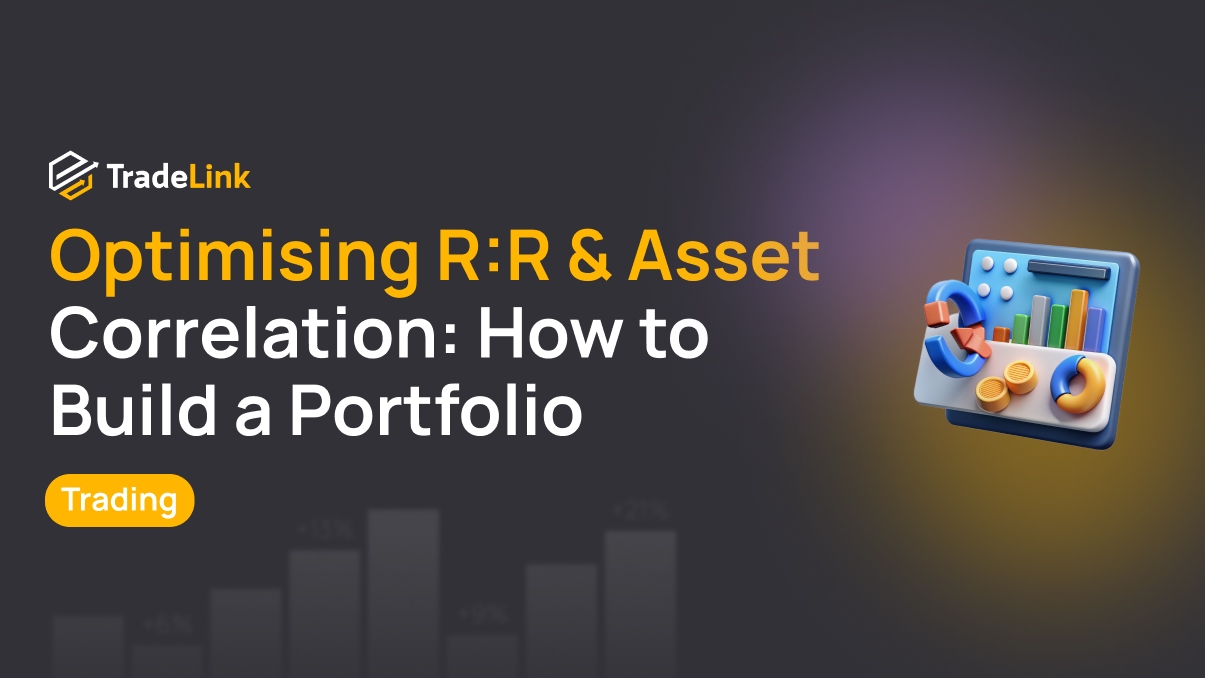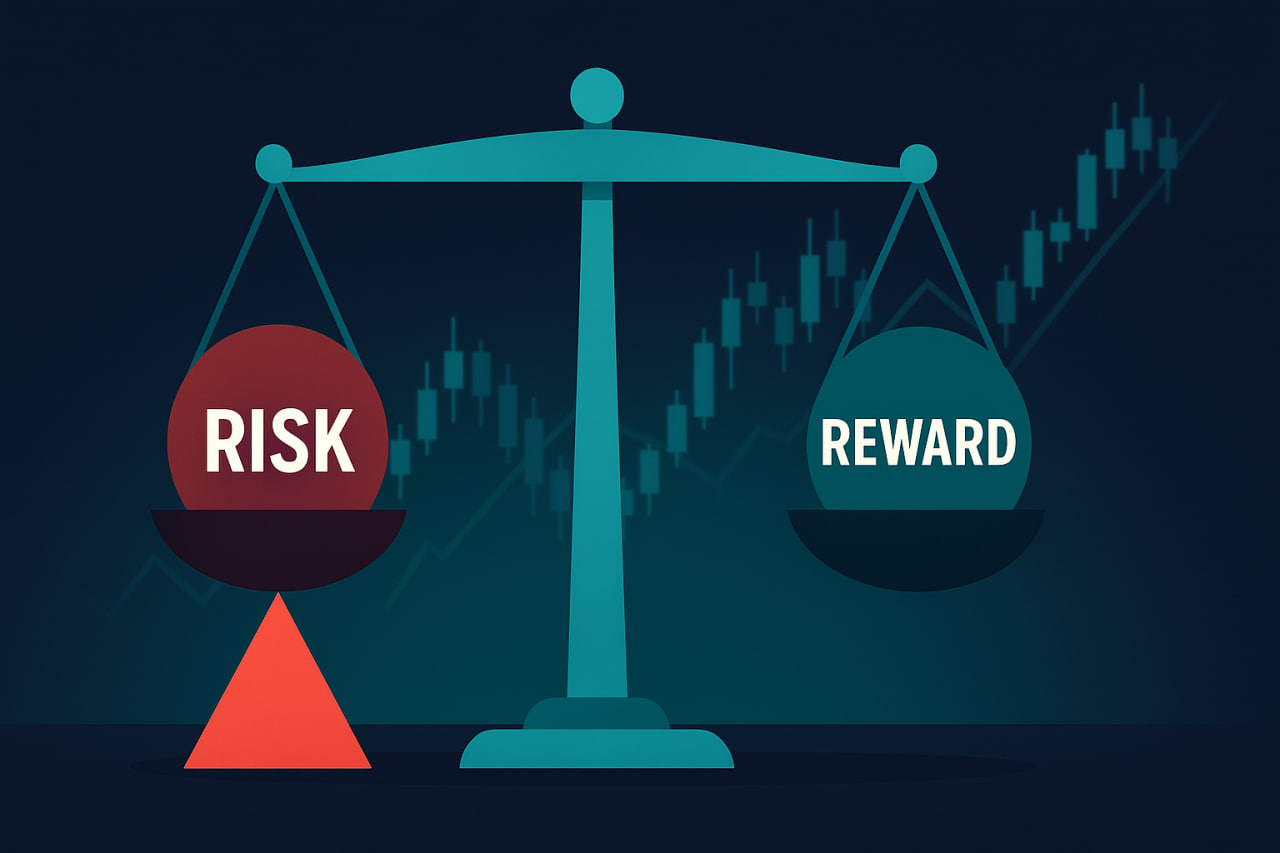Optimizing R:R and Asset Correlation: How to Build a Proper Crypto Portfolio

Contents
- Introduction
- What is the Risk/Reward Ratio (R:R)
- Crypto Asset Correlation: Why It Matters
- Diversification and Asset Allocation
- Optimising a Crypto Portfolio in Practice
- Conclusion
Introduction
In the highly volatile cryptocurrency market, simply choosing popular coins is no longer sufficient. To build an effective cryptocurrency portfolio, factors such as cryptocurrency risk management, optimising the risk/reward ratio (R:R), and understanding crypto asset correlation must be considered. These elements form the foundation of a capital management strategy and help reduce the likelihood of significant drawdowns.
The unique nature of cryptocurrency investments lies in their susceptibility to external shocks: changes in the regulatory environment, liquidity fluctuations, and the behaviour of major players. This is why diversification of a crypto portfolio and the use of risk analysis tools become essential not only for traders but also for long-term investors.
What is the Risk/Reward Ratio (R:R)

The risk/reward ratio (R:R) is a key metric that indicates the potential profit per unit of risk. For example, if a trader risks $100 for a potential profit of $300, their R:R is 1:3.
Without understanding this metric, it’s impossible to evaluate the optimal risk/reward ratio in crypto. Many novice investors focus on short-term growth and ignore R:R, leading to erratic results. Optimising cryptocurrency profitability should always be based on calculating potential losses and likely profits, not just growth forecasts.
Practical Benefits of R:R for Traders and Investors
Using R:R in daily trading and investing helps build discipline. This metric reduces the influence of emotions and enables objective trade evaluation. Key advantages of applying R:R:
- Controlling potential losses at the trade planning stage
- Identifying optimal entry and exit points
- Stabilising long-term results
- Improving the quality of capital management strategies
It’s important to understand that R:R is not a universal guarantee of profit. This metric is effective only when combined with proper diversification and sound capital management.
Crypto Asset Correlation: Why It Matters

Crypto asset correlation reflects how synchronously the prices of different coins move. High correlation between Bitcoin and altcoins makes a portfolio vulnerable, as a drop in Bitcoin’s value typically leads to declines in most other assets.
However, some assets move partially independently of Bitcoin. For instance, stablecoins help maintain liquidity during periods of high volatility, while tokens of specific ecosystems may show growth against the general trend, driven by the development of particular projects. Analysing cryptocurrency correlation for portfolio strategy helps reduce overall risk and allocate capital more rationally.
How Correlation in Cryptocurrencies is Measured
Several approaches are used to analyse dependencies between assets. The most common include:
- Pearson’s statistical correlation coefficient
- Comparing price chart dynamics
- Using analytical service tools (Glassnode, IntoTheBlock, etc.)
- Testing correlations based on historical data
These methods help identify which assets amplify risk and which bring balance. Without correlation analysis, even a well-thought-out portfolio can remain overly vulnerable.
Diversification and Asset Allocation

Crypto portfolio diversification involves allocating assets in a way that reduces overall risk. Even if one market segment experiences a decline, other assets can offset losses.
However, diversification doesn’t mean randomly adding numerous coins. It’s crucial to consider not only the number of assets but also their quality, liquidity, market capitalisation, and correlation with other instruments. Effective portfolio management involves selecting assets with different risk and return profiles.
Role of Different Crypto Asset Classes in a Portfolio
Different categories of coins serve distinct functions in a portfolio:
- Bitcoin: a cornerstone and store of value
- Altcoins: a source of higher returns
- Stablecoins: a tool for capital protection and liquidity base
- Infrastructure project tokens: long-term investments in ecosystem development
Additionally, DeFi tokens and NFT assets can be considered as supplementary segments. They carry a higher risk but, with a prudent allocation, can improve the overall risk/reward ratio.
Optimising a Crypto Portfolio in Practice

Optimising a crypto portfolio involves combining two approaches: analysing the risk/reward ratio and accounting for cryptocurrency correlation. This approach helps build balanced solutions focused not only on profitability but also on resilience to market shocks.
This involves using trading risk metrics such as asset volatility, maximum drawdown, and Sharpe or Sortino ratios. These metrics allow for quantitative measurement of portfolio efficiency and adjustment of allocations.
Examples of Effective Strategies
For practical implementation, proven methods can be used:
- Building a crypto portfolio based on asset classes
- Locking in profits upon reaching target R:R levels
- Using trading risk metrics to adjust positions
- Diversifying crypto assets for long-term investing
The table below outlines asset allocation options based on an investor’s risk tolerance:
| Investor Type | Bitcoin | Altcoins | Stablecoins | Other Tokens |
|---|---|---|---|---|
| Conservative | 60% | 15% | 20% | 5% |
| Moderate | 40% | 30% | 20% | 10% |
| Aggressive | 25% | 50% | 10% | 15% |
This structure demonstrates that optimising cryptocurrency profitability always involves a trade-off between growth and safety. Conservative portfolios protect against drawdowns, while aggressive ones aim to maximise profits with a high level of risk.
Conclusion
Building a balanced cryptocurrency portfolio requires a combination of approaches: evaluating R:R, analysing asset correlation, and diversification. Only a comprehensive capital management strategy can minimise risks and enhance resilience to volatility.
Thoughtful calculations for optimising R:R, strategic asset allocation, and the use of risk metrics create a system that works in the long term. The most successful capital management methods often lie not in chasing quick profits but in a consistent approach that combines strategy, discipline, and adaptation to changing market conditions.